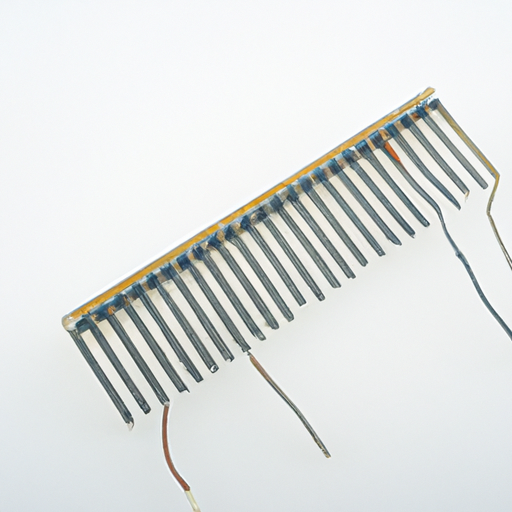

Signal buffers are a crucial component in electronic circuits, serving to isolate and protect signals as they travel through a system. These devices are used in a wide range of applications, from audio equipment to industrial machinery, and their market size reflects their importance in the electronics industry.

One of the key drivers of the signal buffer market is the increasing complexity of electronic systems. As devices become more advanced and incorporate more features, the need for signal buffers to ensure signal integrity and prevent interference becomes more critical. Signal buffers help to maintain signal quality and reduce noise, ensuring that electronic devices operate reliably and efficiently.
Another factor driving the growth of the signal buffer market is the rise of the IoT. As more devices become connected to the internet and communicate with each other, the need for signal buffers to manage and protect these signals increases. Signal buffers play a crucial role in ensuring that data is transmitted accurately and securely, helping to prevent data loss and ensure the smooth operation of IoT devices.
The growing adoption of automation and robotics in industries such as manufacturing, healthcare, and transportation is also fueling demand for signal buffers. These devices are used to control and monitor complex systems, and signal buffers are essential for ensuring that signals are transmitted accurately and efficiently. Signal buffers help to prevent signal degradation and interference, ensuring that automated systems operate smoothly and reliably.
In terms of market segmentation, the signal buffer market can be divided into various types based on factors such as signal type, application, and end-user industry. Common types of signal buffers include voltage buffers, current buffers, and digital buffers, each designed to handle different types of signals and applications. Signal buffers are used in a wide range of industries, including consumer electronics, automotive, telecommunications, and aerospace, reflecting their versatility and importance in modern electronic systems.
In conclusion, the signal buffer market is a vital component of the electronics industry, with a global market size of around $1.5 billion. The growth of this market is driven by factors such as the increasing complexity of electronic systems, the rise of the IoT, and the growing adoption of automation and robotics. Signal buffers play a crucial role in ensuring signal integrity and reliability in electronic devices, making them an essential component in modern electronic systems. As technology continues to advance and electronic devices become more sophisticated, the demand for signal buffers is expected to continue to grow, driving further expansion of the signal buffer market in the coming years.
Signal buffers are a crucial component in electronic circuits, serving to isolate and protect signals as they travel through a system. These devices are used in a wide range of applications, from audio equipment to industrial machinery, and their market size reflects their importance in the electronics industry.

One of the key drivers of the signal buffer market is the increasing complexity of electronic systems. As devices become more advanced and incorporate more features, the need for signal buffers to ensure signal integrity and prevent interference becomes more critical. Signal buffers help to maintain signal quality and reduce noise, ensuring that electronic devices operate reliably and efficiently.
Another factor driving the growth of the signal buffer market is the rise of the IoT. As more devices become connected to the internet and communicate with each other, the need for signal buffers to manage and protect these signals increases. Signal buffers play a crucial role in ensuring that data is transmitted accurately and securely, helping to prevent data loss and ensure the smooth operation of IoT devices.
The growing adoption of automation and robotics in industries such as manufacturing, healthcare, and transportation is also fueling demand for signal buffers. These devices are used to control and monitor complex systems, and signal buffers are essential for ensuring that signals are transmitted accurately and efficiently. Signal buffers help to prevent signal degradation and interference, ensuring that automated systems operate smoothly and reliably.
In terms of market segmentation, the signal buffer market can be divided into various types based on factors such as signal type, application, and end-user industry. Common types of signal buffers include voltage buffers, current buffers, and digital buffers, each designed to handle different types of signals and applications. Signal buffers are used in a wide range of industries, including consumer electronics, automotive, telecommunications, and aerospace, reflecting their versatility and importance in modern electronic systems.
In conclusion, the signal buffer market is a vital component of the electronics industry, with a global market size of around $1.5 billion. The growth of this market is driven by factors such as the increasing complexity of electronic systems, the rise of the IoT, and the growing adoption of automation and robotics. Signal buffers play a crucial role in ensuring signal integrity and reliability in electronic devices, making them an essential component in modern electronic systems. As technology continues to advance and electronic devices become more sophisticated, the demand for signal buffers is expected to continue to grow, driving further expansion of the signal buffer market in the coming years.